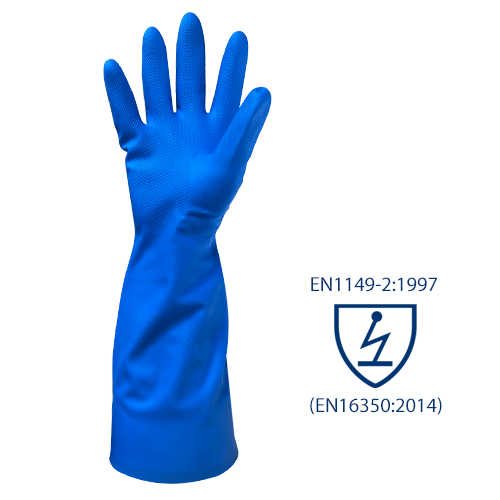EN 420:2003 and BS EN ISO 21420:2020
BS EN ISO 12420:2020
Revisions to the standard mean that EN420:2003 was replaced in February 2020 by BS EN ISO 21420:2020. These revisions primarily focus on the innocuousness requirements, with a new limit for DMF in polyurethane (PU), and with the chemicals now derived from both clause 4 of EN420 and the REACH directive, including nickel release, undetectable carcinogenic amines in AZO dyes, and more.
This standard comes into force when new products are placed on the market or when current product certification expires, until such time EN420:2003 remains valid.
Key Changes
Some important changes in the standard include:
- Innocuousness requirements, referencing REACH and Classification, Labelling and Packaging (CLP)
- Incorporates the latest test methodology and pictograms
- Changes to sizing including no minimum length requirements, an increased size range (4 to 13), having 3 sample gloves tested, and more
- Additions to glove markings and packaging, such as including the manufacturing date and use by date
- Additional manufacturer information, including cleaning care, storage conditions, and more
What is EN420?
EN420 covers the general requirements for protective gloves, and all glove on the market must comply to this standard – the standard covers:
- Sizing and dexterity
- Innocuousness
- Glove marking
- Glove packaging
- Manufacturer details
There are also additional tests which may be carried out, depending on claims made by the manufacturer – these are:
- Resistance to water penetration
- Water vapour transmission and absorption
- Electrostatic properties
EN420 does not assess the protective properties of the gloves, such as the tests covered under EN388 or EN407.
See below a breakdown and explanation of each mandatory part of EN420.
Sizing and dexterity
Here, gloves are assessed to ensure that measurements meet those of the average hand, ensuring that the fit of the glove does not inhibit the user and that the design minimises the length of time taken to remove a glove. The sizing part also looks at how gloves may fit once stretched (if seams are present). These measurements are laid out in the EN420 standard.
Dexterity addresses the movement and tactility offered when wearing the product – this is calculated by the diameter of the smallest pin which can be picked up 3 times, consecutively, in a 30 second period whilst wearing the glove.
Innocuousness
This test looks at the materials and fibres used in the product, and the chemicals which they contain, to assess the level of risk they carry – ensuring that glove materials “shall not adversely affect the user’s health and hygiene”. The requirements and acceptable levels of substances in the innocuousness test are referenced within the standard. Here, the pH value is also calculated and recorded.
Glove marking
To pass EN420, gloves must be marked with the below information. This can be either printed on the outer of the glove, or on a label within the product.
- Name or means of identification
- Glove description
- Size description
- A use by date (if applicable)
- The appropriate pictograms (including the information symbol)
- Date and month of manufacture
- The CE marking
Glove packaging
Under EN420, glove packaging must be clearly marked, with the following information:
- The name and full address of the manufacturer or importer
- Glove and size description
- The appropriate pictogram and reference to the applicable standard (including performance levels)
- Reference to manufacturer information (i.e. a website/telephone number)
- Points 2, 3, and 4 from ‘glove marking’
- Category I gloves must state “for minimal risks only” in the official language of the country of designation
Manufacturer details
Manufacturer details must include:
- Full name and address of manufacturer or importer
- Glove and size description
- The appropriate pictogram and reference to the applicable standard (including performance levels)
- A reference to what area the product is protecting (i.e. hand protection for gloves)
- A list of substances contained in the glove which are known to cause allergies (i.e. latex)
- Instructions for use
Information Source: Satra Technology
Click here to read a SATRA spotlight on EN ISO 21420
If you are interested more information on the above or any of the gloves in our portfolio, you can contact us via the below:
Call – 01653 617718
Email – sales@just1source.com







